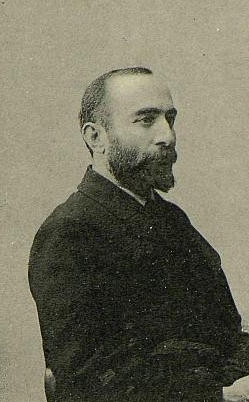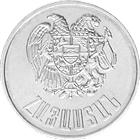|
Transcaucasian Ruble
The ruble (, ), manat () or maneti () was the currency of both Transcaucasian states, the Transcaucasian Democratic Federative Republic and the Transcaucasian Soviet Federal Socialist Republic. First Transcaucasian ruble In 1918, the Comissariat of the short-lived Transcaucasian Democratic Federative Republic issued paper money denominated in rubles. This ruble was equivalent to the Russian ruble. The notes bore Russian text on the obverse, with Armenian, Azerbaijani, and Georgian texts on the reverse. Denominations were 1, 3, 5, 10, 50, 100 and 250 rubles. Between 1919 and 1922/3, Armenia, Azerbaijan and Georgia issued their own currencies, the Armenian, Azeri, and Georgian rubles, which replaced the Transcaucasian rubles at par. Second Transcaucasian ruble In 1923 and 1924, the Transcaucasian Soviet Federal Socialist Republic (part of the USSR) issued notes of denominations between 1,000 and 10 milliard rubles. From 1924 and onwards, the Soviet ruble circulated as the of ... [...More Info...] [...Related Items...] OR: [Wikipedia] [Google] [Baidu] |
Transcaucasian Democratic Federative Republic
The Transcaucasian Democratic Federative Republic (TDFR; 22 April – 28 May 1918) was a short-lived sovereign state, state in the Caucasus that included most of the territory of the present-day Armenia, Azerbaijan and Georgia (country), Georgia, as well as parts of Russia and Turkey. The state lasted only for a month before Georgian Declaration of Independence, 1918, Georgia declared independence, followed shortly after by Declaration of Independence of Armenia (1918), Armenia and Declaration of Independence (Azerbaijan), Azerbaijan. The region that formed the TDFR had been part of the Russian Empire. As the empire dissolved during the 1917 February Revolution and a Russian Provisional Government, provisional government took over, a similar body, called the Special Transcaucasian Committee (Ozakom), did the same in the Caucasus. After the October Revolution and rise of the Bolsheviks in Russia, the Transcaucasian Commissariat replaced the Ozakom. In March 1918, as t ... [...More Info...] [...Related Items...] OR: [Wikipedia] [Google] [Baidu] |
Georgian Ruble
The maneti ( ka, მანეთი) was the currency of the Democratic Republic of Georgia and the Georgian Soviet Socialist Republic between 1919 and 1923. It replaced the first Transcaucasian rouble at par and was subdivided into 100 kopecks ( ''k’ap’eik’i''). It was replaced by the second Transcaucasian rouble after Georgia became part of the Transcaucasian Socialist Federative Soviet Republic. After the formation of the Transcaucasian Democratic Federative Republic in 1918, Georgia, Armenia and Azerbaijan began issuing a single currency unit called the Transcaucasian ruble. On May 26, 1918, the Transcaucasian Democratic Federative Republic was disbanded, resulting in the formation of three new republics in the South Caucasus: Georgian, Armenian and Azerbaijani.Georgia began issuing its own currency units called Georgian rubles (maneti), which were also called "Georgian boni".Nikolozi Sepiashvili"The Secret Operation of Soviet Russia's Financial Intelligence Service - ... [...More Info...] [...Related Items...] OR: [Wikipedia] [Google] [Baidu] |
Modern Obsolete Currencies
Modern may refer to: History *Modern history ** Early Modern period ** Late Modern period *** 18th century *** 19th century *** 20th century ** Contemporary history * Moderns, a faction of Freemasonry that existed in the 18th century Philosophy and sociology * Modernity, a loosely defined concept delineating a number of societal, economic and ideological features that contrast with "pre-modern" times or societies ** Late modernity Art * Modernism ** Modernist poetry * Modern art, a form of art * Modern dance, a dance form developed in the early 20th century * Modern architecture, a broad movement and period in architectural history ** Moderne, multiple architectural styles ** Modernisme a.k.a. Catalan Modernism * Modern music (other) Geography *Modra, a Slovak city, referred to in the German language as "Modern" Typography * Modern (typeface), a raster font packaged with Windows XP * Another name for the typeface classification known as Didone (typography) * Modern ... [...More Info...] [...Related Items...] OR: [Wikipedia] [Google] [Baidu] |
Azerbaijani Manat
The manat (ISO 4217, ISO code: AZN; Currency symbol, sign: ₼; abbreviation: m) is the currency of Azerbaijan. It is subdivided into 100 ''gapiks''. The first iteration of the currency emerged in the Azerbaijan Democratic Republic and its successor, the Azerbaijan Soviet Socialist Republic, with the issues happening in 1919–1923. The currency underwent hyperinflation, and was eventually substituted by the Transcaucasian ruble, which, in its turn, was converted to the Soviet ruble. When Azerbaijan gained independence from the Soviet Union, it substituted the Soviet ruble with the manat, which also went through a period of high inflation in the first years, rendering the coinage obsolete. The current manat in circulation has existed since the Redenomination of the Azerbaijani manat, redenomination in 2006, when old manats (AZM) were substituted with lower face values and new design. The currency has mostly been pegged to the United States dollar, US dollar, at what is now the r ... [...More Info...] [...Related Items...] OR: [Wikipedia] [Google] [Baidu] |
Armenian Dram
The Armenian dram (; Armenian dram sign, sign: ֏; abbreviation: դր.; ISO 4217, ISO code: AMD) is the currency of Armenia. It was historically subdivided into 100 luma (). The Central Bank of Armenia is responsible for issuance and circulation of dram banknotes and coins, as well as implementing the monetary policy of Armenia. The word ''dram'' means "money" and is cognate with the Greek Modern drachma, drachma and the Arabic dirham, as well as the English weight unit Dram (unit), dram. History The first instance of a "dram" currency was in the period from 1199 to 1375, when silver coins called ''dram'' or ''tram'' were issued. Dram or Takvorin coinage would periodically continue to be produced for some time until the loss of Armenia's independence. The establishment of Russian Armenia saw the adoption of the Imperial ruble, followed by a series of attempts to localize the Russian ruble under the Soviet Union and Commonwealth of Independent States (CIS). On 21 September 199 ... [...More Info...] [...Related Items...] OR: [Wikipedia] [Google] [Baidu] |
Soviet Ruble
The ruble or rouble (; rus, рубль, r=rubl', p=rublʲ) was the currency of the Soviet Union. It was introduced in 1922 and replaced the Russian ruble#Imperial ruble (1704-1922), Imperial Russian ruble. One ruble was divided into 100 kopecks ( – ''kopeyka'', ''kopeyki''). Soviet banknotes and coins were produced by the Federal State Unitary Enterprise (or Goznak) in Moscow and Leningrad. In addition to regular cash rubles, other types of rubles were also issued, such as several forms of ''convertible ruble'', transferable ruble, clearing ruble, Vneshtorgbank cheque, etc.; also, several forms of virtual rubles (called "cashless ruble", ) were used for inter-enterprise accounting and international settlement in the Comecon zone. In 1991, after the dissolution of the Soviet Union, the Soviet ruble was replaced by the first Russian ruble by 1993, and continued to be used in eleven post-Soviet states, forming a "ruble zone" until 1993. Etymology The word ''ruble'' is derived ... [...More Info...] [...Related Items...] OR: [Wikipedia] [Google] [Baidu] |
Milliard
1,000,000,000 (one billion, short scale; one thousand million or one milliard, one yard, long scale) is the natural number following 999,999,999 and preceding 1,000,000,001. With a number, "billion" can be abbreviated as b, bil or bn. In standard form, it is written as 1 × 109. The metric prefix giga indicates 1,000,000,000 times the base unit. Its symbol is G. One billion years may be called an '' eon'' in astronomy or geology. Previously in British English (but not in American English), the word "billion" referred exclusively to a million millions (1,000,000,000,000). However, this is not common anymore, and the word has been used to mean one thousand million (1,000,000,000) for several decades. The term ''milliard'' could also be used to refer to 1,000,000,000; whereas "milliard" is rarely used in English, variations on this name often appear in other languages. In the Indian numbering system, it is known as 100 crore or 1 . 1,000,000,000 is also the cube of 1000. ... [...More Info...] [...Related Items...] OR: [Wikipedia] [Google] [Baidu] |
USSR
The Union of Soviet Socialist Republics. (USSR), commonly known as the Soviet Union, was a List of former transcontinental countries#Since 1700, transcontinental country that spanned much of Eurasia from 1922 until Dissolution of the Soviet Union, it dissolved in 1991. During its existence, it was the list of countries and dependencies by area, largest country by area, extending across Time in Russia, eleven time zones and sharing Geography of the Soviet Union#Borders and neighbors, borders with twelve countries, and the List of countries and dependencies by population, third-most populous country. An overall successor to the Russian Empire, it was nominally organized as a federal union of Republics of the Soviet Union, national republics, the largest and most populous of which was the Russian SFSR. In practice, Government of the Soviet Union, its government and Economy of the Soviet Union, economy were Soviet-type economic planning, highly centralized. As a one-party state go ... [...More Info...] [...Related Items...] OR: [Wikipedia] [Google] [Baidu] |
Azerbaijani Rouble
The ruble (, ), or manat (), was the currency of several state entities on the territory of Azerbaijan in from 1918 to 1923. History On January 19, 1918, the Baku City Council began issuing the so-called "Baku money". This was the first issue of paper money in the post-revolutionary Transcaucasia. In February of the same year, the Transcaucasian Commissariat began issuing booms (the first Transcaucasian ruble, “zakbon”), which were issued until September 1918 and distributed on a contractual basis between Georgia, Armenia and Azerbaijan. At the same time, the issue of Baku money continued until July 1918. In July the Baku Commune began issuing money from the Municipal Economy Council, which was issued until September 14 of the same year. In October 1918, the government of the Azerbaijan Democratic Republic began issuing booms. In September 1919, the State Bank of Azerbaijan was established, which began issuing banknotes of the ADR until April 1920. The issue of paper money ... [...More Info...] [...Related Items...] OR: [Wikipedia] [Google] [Baidu] |
Transcaucasian SFSR
, image_flag = Flag of the Transcaucasian SFSR (variant).svg , flag_type = Flag(1925–1936) , image_coat = Emblem of the Transcaucasian SFSR (1930-1936).svg , symbol_type = Emblem(1930–1936) , national_anthem = "The Internationale" , image_map = Soviet Union - Transcaucasia.svg , image_map_caption = Location of the Transcaucasian SFSR (red) within the Soviet Union , status = Union Republic of the Soviet Union(1922–1936) , capital = Tiflis (Tbilisi) , common_languages = Armenian Azerbaijani GeorgianRussian , ethnic_groups = 30.7% Georgians28.2% Azerbaijanis22.7% Armenians5.7% Russians5.2% Iranian peoples1.1% Jews1.0% Lezgic peoples1.0% Greeks1.0% Abkhazians3.4% Others , ethnic_groups_year = 1926 , demonym = Transcaucasian , government_type = Federal Soviet socialist republic , legislature = All-Caucasia ... [...More Info...] [...Related Items...] OR: [Wikipedia] [Google] [Baidu] |
Armenian Ruble
The ruble (, ) was the independent currency of the First Republic of Armenia and the Armenian Soviet Socialist Republic between 1919 and 1923. It replaced the first Transcaucasian ruble at par and was replaced by the second Transcaucasian ruble after Armenia became part of the Transcaucasian Soviet Federal Socialist Republic. No subdivisions of the ruble were issued and the currency existed only as banknotes. Banknotes Provisional cheques were issued by the First Republic of Armenia in denominations of 5, 10, 25, 50, 100, 250, 500, 1,000, 5,000, and 10,000 rubles. Most were quite crudely printed with mostly Russian text. However, three actual banknotes in denominations of 50, 100 and 250 rubles were printed in the United Kingdom, UK by Waterlow and Sons Ltd. The notes were designed by artists Arshak Fetvadjian and Hakob Kojoyan. These notes are adorned with Armenian, French, and Russian text. The Armenian SSR issued denominations between 5,000, 10,000, 25,000, 100,000, 500,000, 1 ... [...More Info...] [...Related Items...] OR: [Wikipedia] [Google] [Baidu] |





